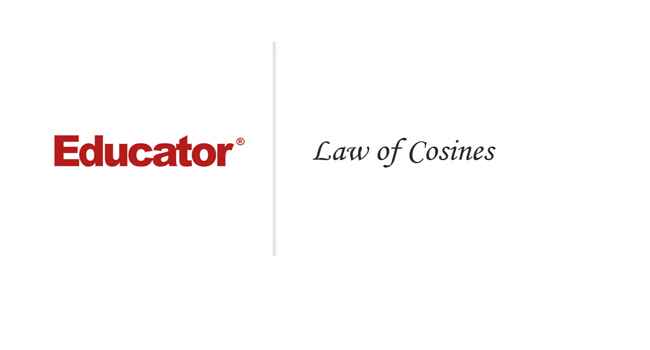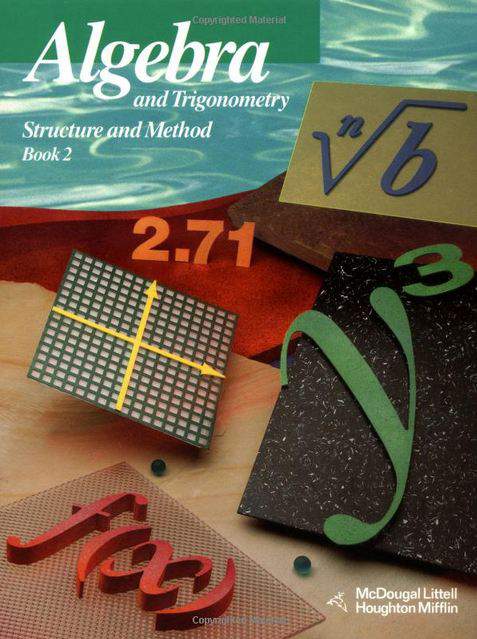Connecting...

This is a quick preview of the lesson. For full access, please Log In or Sign up.
For more information, please see full course syllabus of Trigonometry
For more information, please see full course syllabus of Trigonometry
Trigonometry Law of Cosines
Lecture Description
Another great rule in trigonometry is the cosine rule (also known as the Law of Cosines). This one also gives us the relationship between the angles and the sides, but we apply it in different cases from the law of sines. These cases are explained in detail in the video. The law of cosines works for any triangle, not just the right triangles. The interesting thing is that this is actually a generalization of the Pythagorean Theorem. This lecture also covers the Heron's Formula, which is used to determine the area of the triangle if you know all its sides.
Bookmark & Share
Embed
Share this knowledge with your friends!
Copy & Paste this embed code into your website’s HTML
Please ensure that your website editor is in text mode when you paste the code.(In Wordpress, the mode button is on the top right corner.)
×
Since this lesson is not free, only the preview will appear on your website.
- - Allow users to view the embedded video in full-size.
Next Lecture
Previous Lecture










































 Answer Engine
Answer Engine










1 answer
Mon Jul 11, 2022 9:56 PM
Post by Hannah Yao on July 11, 2022
In Example 3, should sqrt 264 be simplified to 2sqrt66?
1 answer
Wed Jun 3, 2020 10:18 AM
Post by Kevin Liang on June 1, 2020
In extra example one shouldn't c be the hypotenuse?
1 answer
Fri Jun 1, 2018 11:48 AM
Post by Kenneth Zhang on May 31, 2018
How does the Law of Cosine turn into the Pythagorean Theorem in mathematical terms?
1 answer
Wed May 30, 2018 9:41 AM
Post by Kenneth Zhang on May 28, 2018
If one of the checks don't work, how might we solve for the problem then? Would we use imaginary numbers instead of proper formulas?
1 answer
Fri Mar 20, 2015 6:29 PM
Post by Glenn O'Neill on March 19, 2015
in Example 2 you use the Law of Cosines to find each angle by relabeling all the angles to fit the formula... wouldn't it be a lot easier to label the triangle once, solve for angle C and then use the law of sines to find other other 2 angles?
2 answers
Thu Jul 18, 2013 8:22 AM
Post by John Hunter on July 6, 2013
I hope i haven't missed the answer to this question somewhere in the lecture. You gave us the number of solutions for ASA, SAA, SSA, and AAA for the law of sines, but is there a shortcut to tell how many solutions a triangle will have when using the law of cosines with SAS and SSS? Many Thanks.
1 answer
Thu May 30, 2013 4:01 PM
Post by Shyann Williams on March 29, 2011
Angle B = (angle A-C)
1 answer
Thu May 30, 2013 3:59 PM
Post by Mark Mccraney on January 18, 2010
There is a typo in Heron's formula as stated in Quicknotes: the fourth term, (s-b), should be (s-c). This will take in account for all three sides of the triangle, not 2 and side b being used twice.